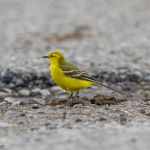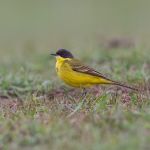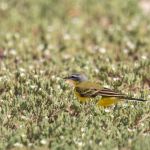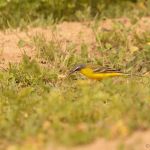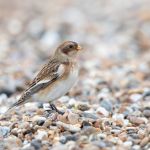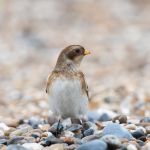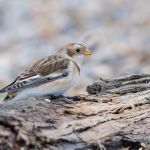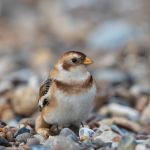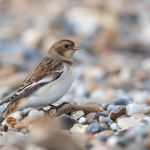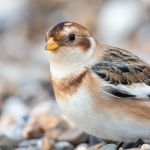In recent years taxonomy, the branch of the life sciences concerned with the classification of living organisms, has been revolutionised by the ability to rapidly, and inexpensively, read genetic material. Whereas once upon time classification of species was based largely on measurements and morphology (in the case of birds – structure and plumage) of museum specimens now differences in genetic make up provides important evidence as to the validity of a species. In the case of birds an ability to turn a digital recording of songs and call into a sonogram – a graph of the frequency (pitch) of bird’s sound versus time that can act as a digital fingerprint has also become a valuable tool in the toolkit of both the professional taxonomist and field birder. This last technique has been pioneered and used to great effect by the Sound Approach team
Any birder who has travelled widely in Europe and Asia knows our familiar Yellow Wagtail is just one of about a dozen different forms with more or less defined breeding areas. An encounter with a flock of migrating “yellow” wagtails in spring is always an exciting affair; sorting through the identifiable forms and guessing their final destination. The gallery below has a selection of images from Georgia (2014), Western Sahara (2018) and Kuwait (2019).
Recent work by Sander Bot and colleagues (Dutch Birding (2014) 36: 295-311 ) used a combination of genetics and sound recordings to assign nine western forms of yellow wagtail (including all of the above) to a species now known as Western Yellow Wagtail (Motacilla flava) with the remaining four forms that breed in East Asia to a genetically and vocally distinct species – Eastern Yellow Wagtail (Motacilla tschutschensis). Elevation of Eastern YW to a full species and greater awareness of both the different call and the monochrome look of typical first winter birds has led to an upturn in the number of records in recent autumn especially from the UK and Netherlands -although in most cases identification has been aided by sequencing of DNA extracted from faecal samples.
As a consequence it was just a matter of time before a Eastern YW turned up in striking distance of home – or to be precise Walberswick on the Suffolk coast where a first winter bird had been hanging about with a couple of lingering Western YWs during the first half of November.
Fortunately I chose a fine, if cold, Saturday morning for my visit to its favoured beachside pool. I parked the car at Hoist Covert (52.310110, 1.638246) before striking out East across the marsh to the shingle beach. There were plenty of showy Bearded Reedlings to slow my progress and by the time I got to the pools the bird had already shown itself to the assembled group As I set up my camera and tripod I heard a loud and unfamiliar buzzing call and the Eastern YW flew directly towards us, landed briefly on the beach before flying strongly South! “Not to worry” I was told “all part of its daily routine”. Fortunately, whilst I waited for it to return, there was a delightful and confiding flock of 20 Snow Buntings playing hide and seek in the shingle in between visits to some seed that had been put down for them.
After about an hour and a half a “yellow” wagtail appeared in the vegetation at the edge of the favoured pool. After a short wait it revealed itself to be one of the Western YWs. Unfortunately when the bird relocated onto the beach the entire group of observers noisily moved in order to get a better view As they did I heard a now familiar call overhead; its Eastern cousin had returned but took one look at the human activity and flew off South again!
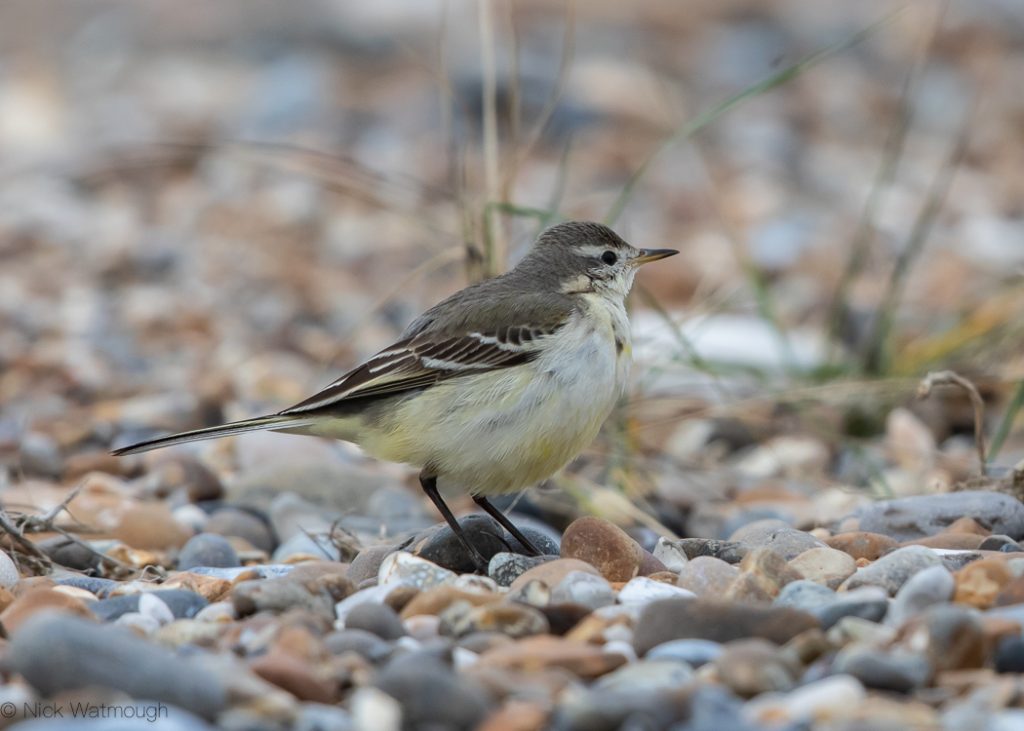
By now it was lunchtime, noticeably cooler and the light was deteriorating. I decided to give it a further hour before trying to salvage something from the day. Luck was with me and after a further 15 minutes the Eastern YW returned and posed rather distantly on a shingle ridge. Although I was grateful for the 2x teleconverter on my 600mm lens it made focusing challenging in the dull light. That said the gloom accentuated the birds dark olive upper parts, dark lores and crisp white feather edgings. Eastern Yellow Wagtail it most certainly was and #716 for my Western Palearctic list.
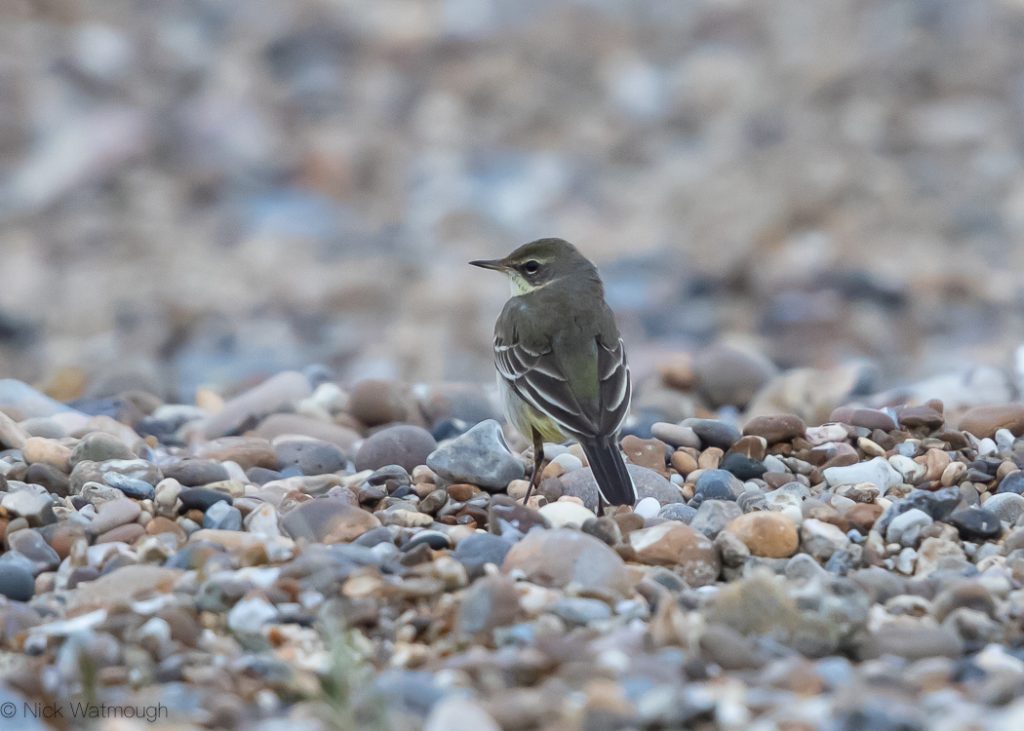
The following day I was back on the shingle in pursuit of a rare bird. After an early morning walk around Happisburgh with Graham which yielded a late Yellow-browed Warbler and a Woodcock we enjoyed breakfast in Walcott before heading up to the North Norfolk coast to catch up with an Isabelline Wheatear found by Mark Golley earlier in the week. Despite a diet supplemented by meal worms the bird appeared to be struggling spending long periods almost motionless on its favoured fence posts. A sombre reminder that despite the joy we get from finding and seeing vagrants for many ending up hundreds or thousands of miles from home may be the beginning of he end.
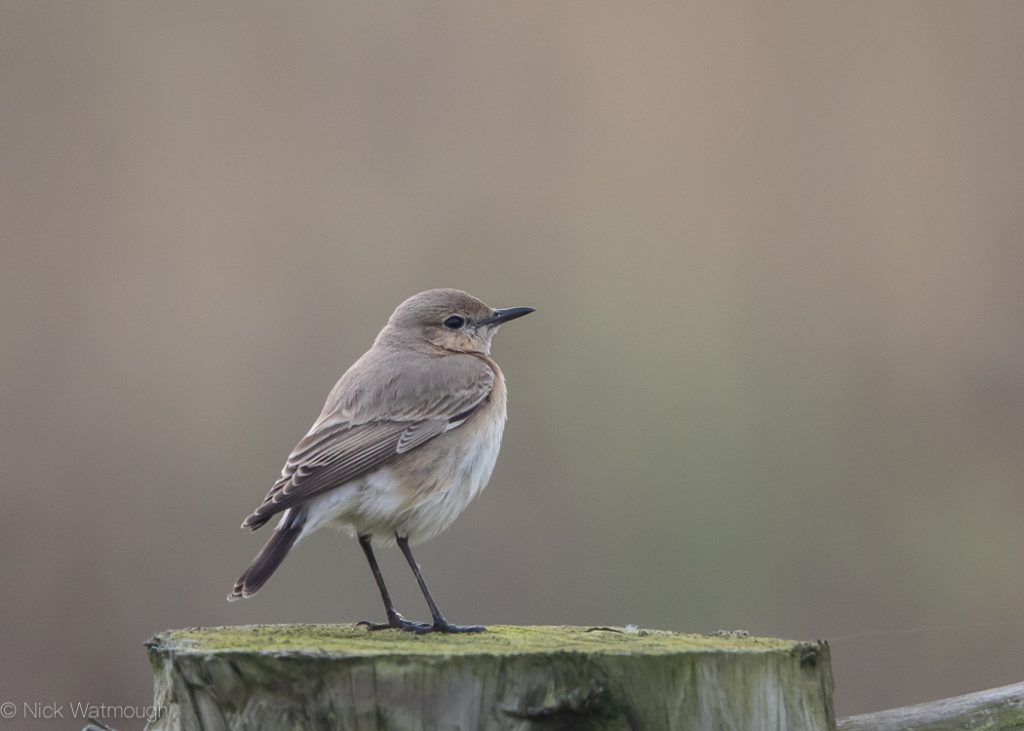
We made a quick stop on the way home to see a rather distant Rough-legged Buzzard near Wells which in many ways felt an appropriate way to end an autumn that had started 3 months earlier in Batumi.


